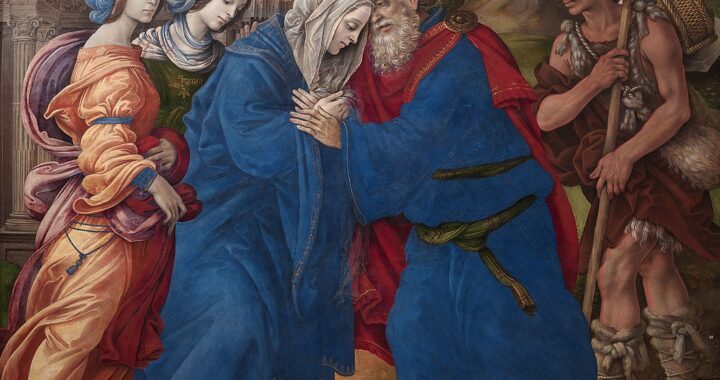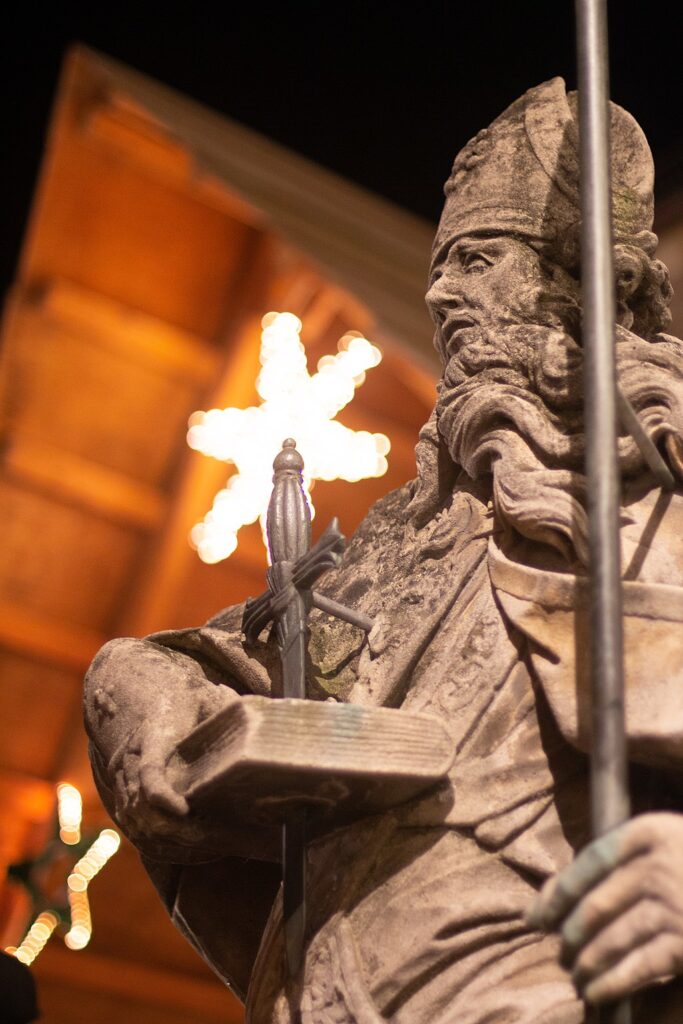
All images are from Wikimedia Commons
He was given the name of Winfrid at his baptism in about the year 680. Born in southern England and educated at a monastery school, Winfrid eventually chose to become a monk himself. His reputation as a teacher and scholar attracted many students to his school and led him to be chosen as the school’s director. Somewhat later, at the age of 30, he decided God was calling him to become a priest.
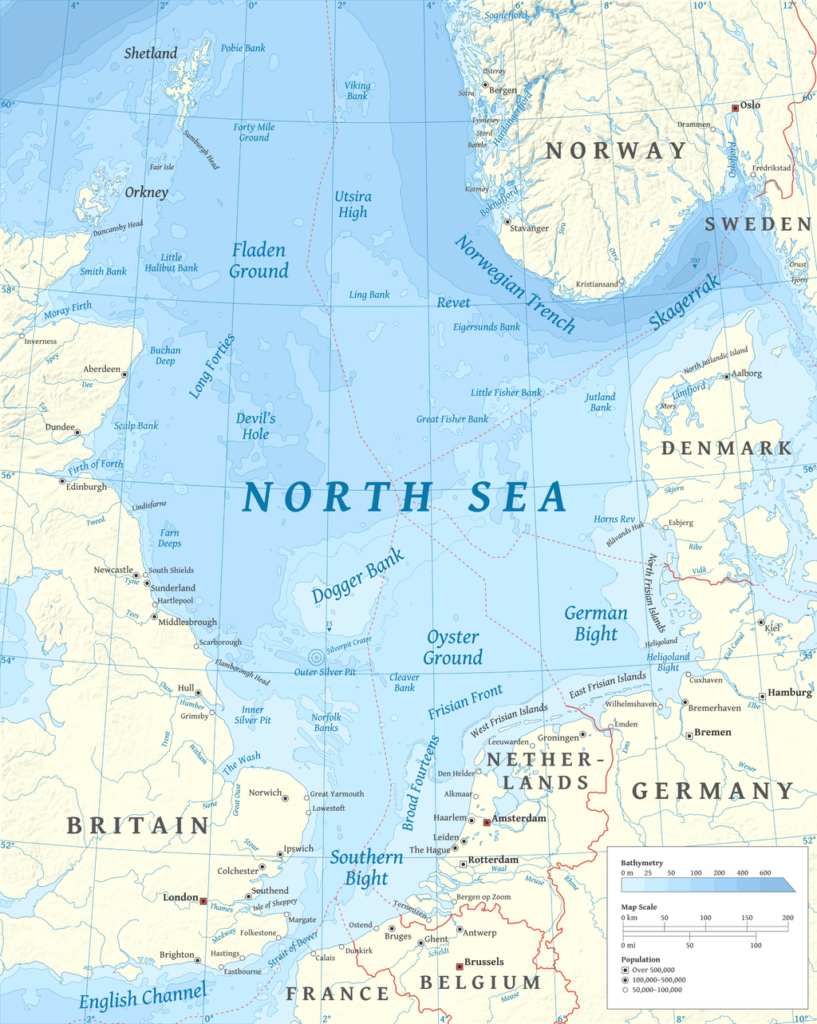
Although the Catholic faith had already spread in England in the early eighth century, there were many parts of Europe which were largely pagan. Winfrid believed that God was calling him to evangelize the unbelievers in Friesland, a region along the north sea coast of Europe, now known as the Netherlands and Germany. After convincing his abbot to give him permission to leave his abbey with a few companions, Winfrid traveled there by boat in the year 716. But almost immediately he realized that the time was not yet right to preach the Gospel to the Frisian people, and he returned home to England.
Two years later, he thought the time had come. But, having learned from his past experience, this time he traveled not east, but south. He arrived in Rome, met with Pope Saint Gregory II, and received papal permission to go to Friesland as a missionary. He also received a new (Latin) name from the pope: Boniface.
While Boniface was on his way to his mission, he learned that the pagan ruler of the Frisians had died, which seemed a good sign for evangelization. And it was. Since the dialect Boniface spoke in his native England closely resembled the dialect spoken in Friesland, Boniface was able to make himself—and the Gospel—understood. Now that he had the authority of the Church behind him, many people became Christians, which Boniface dutifully reported to the pope.
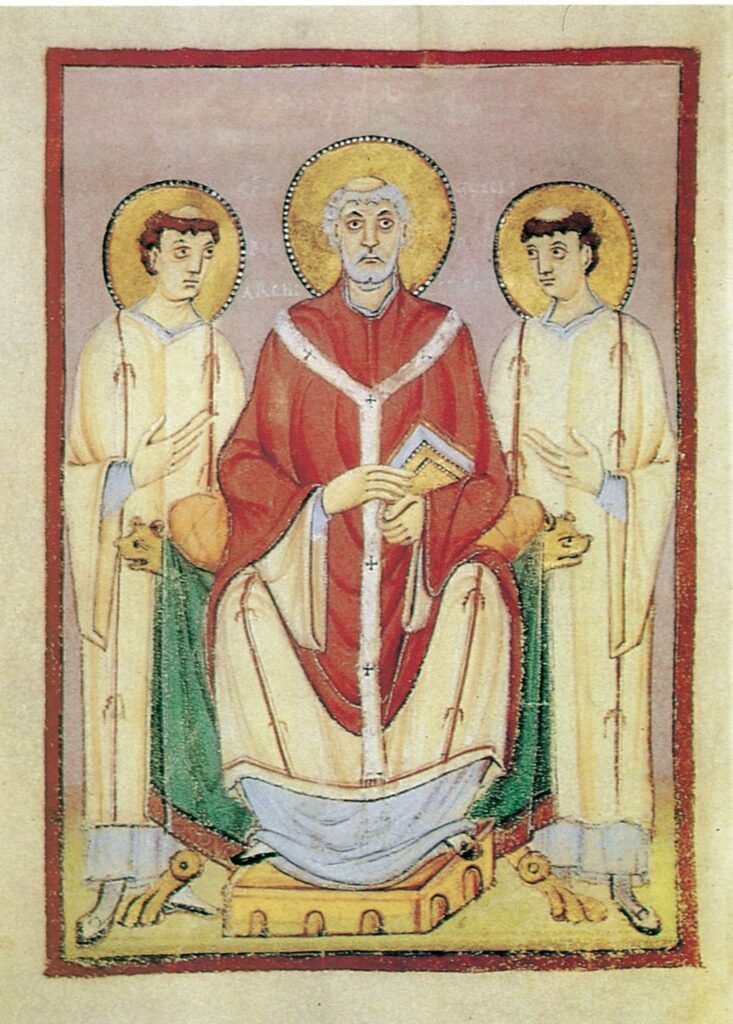
and Apostle to the Frisians
At first, Boniface worked under another missionary, Saint Willibrord, who had been serving in a nearby region for years. Willibrord wanted the talented Boniface to succeed him as bishop, but Boniface did not want to limit his efforts to just one area. So he returned to Rome. The pope agreed with Boniface, made him a bishop, and gave him jurisdiction over a large area.
With the new authority granted him by the pope, Boniface was ready for his greatest battle yet—with a tree. Pagans venerated and offered sacrifices to an ancient oak tree in the city of Hesse. Armed with an axe and with a large crowd watching, Boniface personally cut down Donar’s sacred oak. Soon after he started swinging, the huge tree cracked into four pieces. None of the dire punishments the pagans had predicted descended upon Boniface. With their pagan beliefs shaken, many unbelievers became Christian believers. When the church in Hesse seemed to be on solid footing, Boniface continued his travels from town to town, spreading the Good News of Jesus Christ.
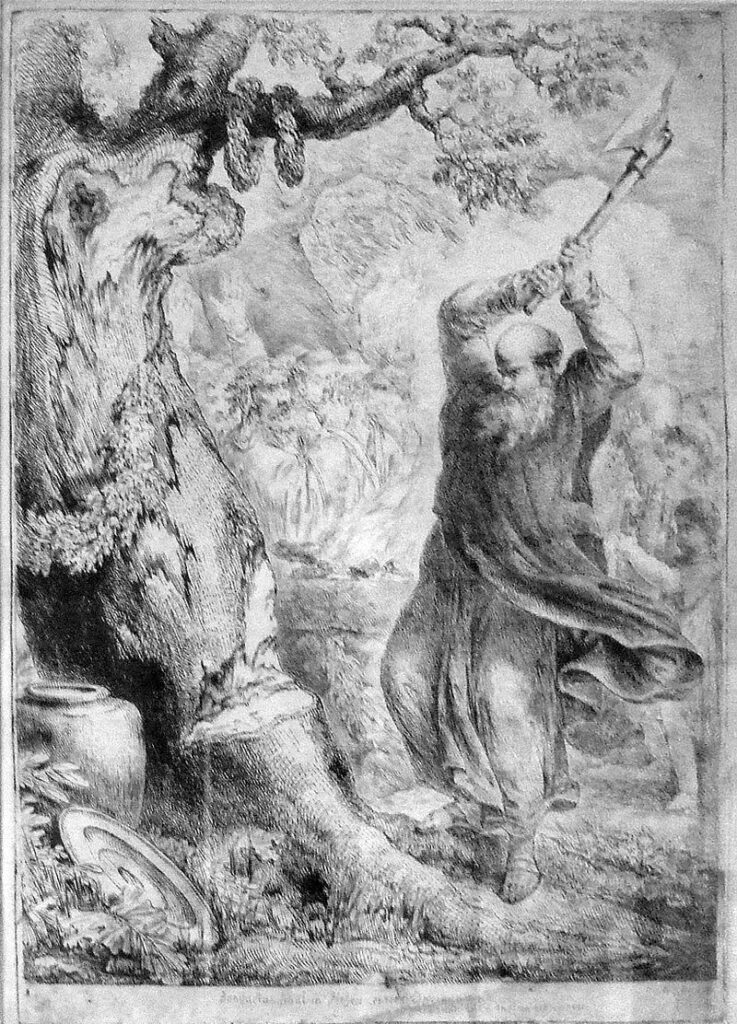
Eventually conversions were occurring so rapidly that Boniface needed more workers in his missionary vineyard in Friesland. He wrote to the monasteries of England for help, and both monks and nuns accepted his challenge. Many of those who served under Boniface eventually became canonized saints, such as Saints Lull, Eoban, Thecla, and Walburga, and monasteries began to be built in the area. The greatest of these was Fulda Abbey, which later became as famous as Saint Benedict’s Monte Cassino.
While Boniface is rightly honored as the Apostle of Germany, he also served as a Church leader in nearby France. Although French kings and the French people had embraced the Catholic faith for almost two hundred years before Boniface had even been born, the Church is always in need of reform. Boniface was invited to preside over synods in France, where his wisdom and leadership helped him establish better discipline among the French clergy and monks and bring a halt to lingering pagan practices.
By the year 753, Boniface was in his seventies and had been the bishop of Mainz for many years. He decided to retire as bishop and named his assistant, Saint Lull, to succeed him. But that did not mean Boniface was ready to stop teaching people about Jesus Christ. Instead, he gathered a group of followers to accompany him as he traveled to remote areas.
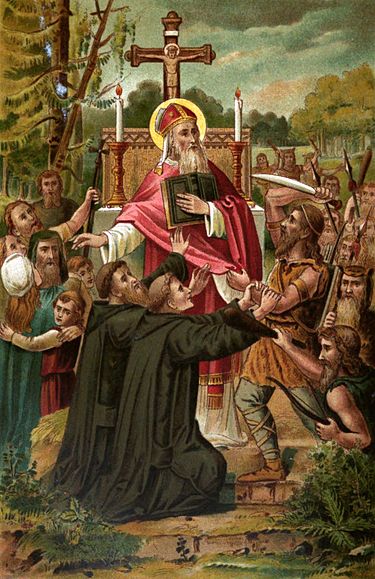
According to tradition, on June 5, 754, Boniface was reading a book when an armed group of bandits attacked their camp. Boniface told his companions not to fight back. He may have quickly realized that they were only bandits searching for treasure. (The only treasure that Boniface and his companions possessed were sacred vessels and books.) When one of the bandits attacked Boniface, Boniface tried to shield himself with his book. He was killed, as were all of his companions. All were acclaimed as martyrs.

Boniface’s body was eventually translated to Fulda Abbey, where it has been venerated for centuries. The monks of Fulda have claimed that they possess the book Boniface was holding, stained with his blood and with marks of the fatal attack.
There are a handful of books from that time period that could have been that famous book, and modern scholars debate about which one is the right one. The Ragyndrudis Codex, for example, has a nailmark in it, although some point out that pagans often drove nails into Christian books for superstitious reasons.
Whether or not the actual book Saint Boniface was holding at the time of his martyrdom still exists or not, it is easy to identify portrayals of this saint in statues and paintings. He’s the one holding a book with a sword driven through it. After all, the symbolism of the book and the sword is perfect for Saint Boniface, who conquered the violence of the pagan world with the Word of God.

